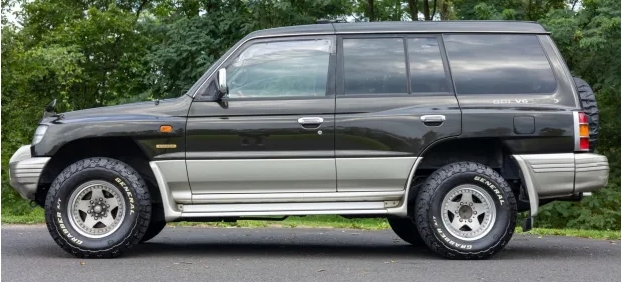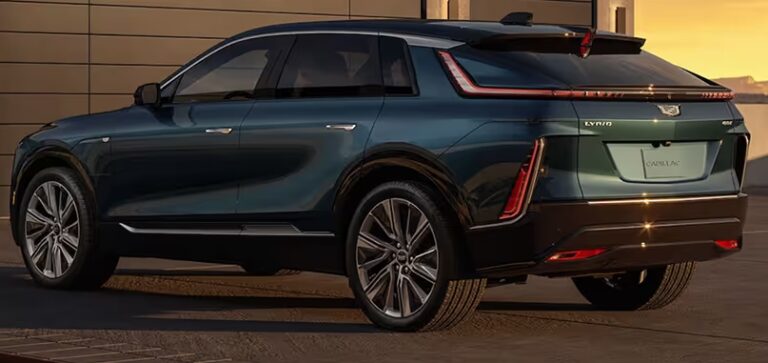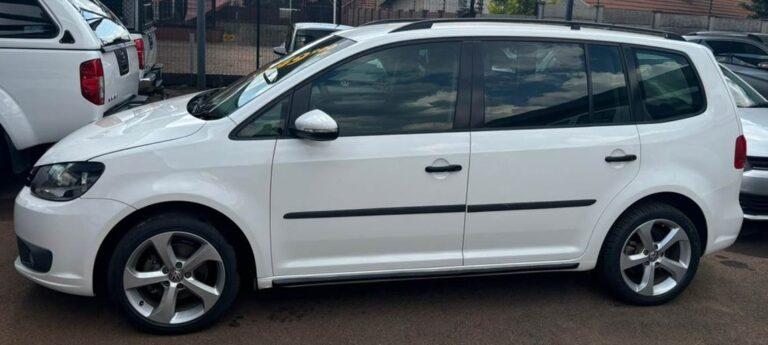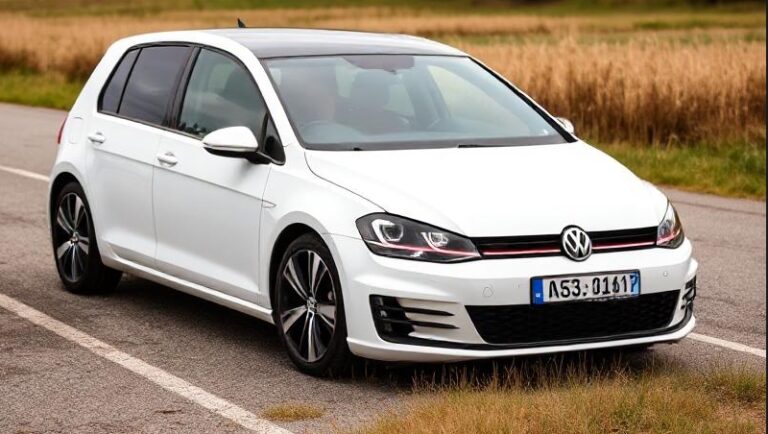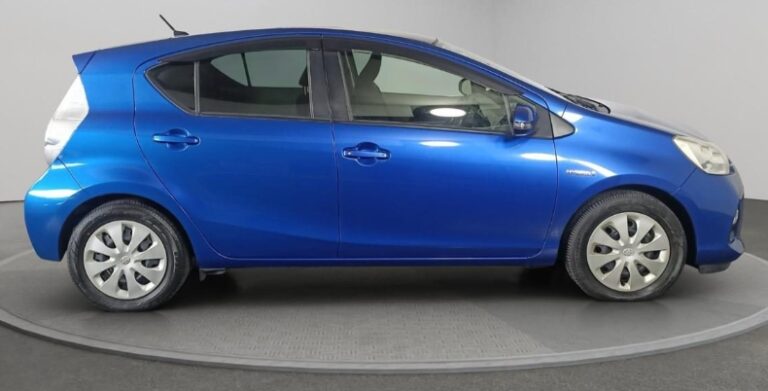The Evolution of the Mitsubishi Pajero
The Mitsubishi Pajero, known as the Mitsubishi Montero or Mitsubishi Shogun in various markets, is a legendary SUV that has carved out a significant place in automotive history since its inception. Renowned for its rugged durability, off-road prowess, and innovative features, the Pajero has undergone numerous transformations over its decades-long production run. This article provides a detailed chronological overview of the Mitsubishi Pajero’s evolution, including production years, model variants, and trim levels offered throughout its history.
Early Beginnings and First Generation (1982–1991)
Introduction and Launch
Mitsubishi introduced the Pajero in 1982, marking its entry into the burgeoning SUV segment. Designed as a versatile and robust four-wheel-drive vehicle, the first-generation Pajero was initially developed for the Japanese domestic market but quickly gained international popularity.
Design and Features
- Chassis and Body: The first-generation Pajero was based on a rugged, body-on-frame construction, emphasizing durability and off-road capability.
- Engine Options: It offered a range of engines, including carbureted 2.0-liter and 2.6-liter four-cylinders, and later a 2.3-liter turbocharged diesel.
- Drive and Transmission: Features included part-time 4WD systems, with some models equipped with full-time 4WD.
Models and Trim Levels
Initially, Mitsubishi offered the Pajero in various trims, such as:
- Super Exceed: The top-tier trim featuring additional luxury and comfort features.
- X1 and X2: Base and mid-range variants focused on utility and affordability.
- Long Wheelbase (LWB) and Short Wheelbase (SWB): Variants catering to different customer needs.
Notable Milestones
- In 1983, the Pajero was introduced to international markets, including Australia, the Middle East, and Southeast Asia.
- The first-generation Pajero achieved success in rally racing, notably winning the Dakar Rally multiple times in the mid-1980s.
Second Generation (1991–1999)
Design and Engineering
The second-generation Pajero debuted in 1991, showcasing a more modern, aerodynamic design and advanced engineering features. It was built on a reinforced platform with improved safety and comfort.
Key Features
- Engine Lineup: Expanded to include 2.5-liter and 2.8-liter turbo-diesel engines, as well as a 3.0-liter V6 petrol engine.
- Transmission Options: 5-speed manual and 4-speed automatic transmissions.
- Drive Systems: Introduction of full-time 4WD with a selectable low-range transfer case.
- Suspension: Independent front suspension and a solid rear axle with coil springs, enhancing ride comfort and off-road capability.
- Safety and Comfort: Inclusion of airbags, anti-lock brakes (ABS), and improved interior amenities.
Models and Trim Levels
The second generation offered a variety of models:
- Exceed: Luxury trim with premium features like leather seats, power accessories, and upgraded audio systems.
- Super Exceed: The highest trim level, often equipped with leather upholstery, sunroof, and advanced off-road features.
- Super Sport: Performance-oriented variants with sport-tuned suspensions and cosmetic enhancements.
- Commercial/Utility Models: Focused on commercial or utility use with minimal trims.
Special Editions
During this period, Mitsubishi released several special editions, such as the “Viking” and “V43” models, which featured unique styling cues and additional equipment.
Rally Success and Global Presence
The second-generation Pajero continued Mitsubishi’s rallying legacy, with notable success in Dakar and other off-road competitions, bolstering its reputation as a rugged, reliable SUV.
Third Generation (1999–2006)
Design and Technological Advancements
Launched in 1999, the third-generation Pajero adopted a more aerodynamic and refined design, with smoother lines and improved aerodynamics. It was built on a new platform emphasizing safety, comfort, and off-road prowess.
Features and Innovations
- Engine Lineup:
- 3.0-liter V6 petrol engine.
- 2.8-liter turbo-diesel.
- New 3.2-liter Di-D turbo-diesel introduced later.
- Transmission: 5-speed manual and 4-speed automatic options.
- Drive Systems: Advanced Super Select 4WD system allowed seamless switching between 2WD, 4WD high, and 4WD low.
- Safety: Introduction of side airbags, traction control, and electronic stability control in later models.
- Interior: Upgraded with higher-quality materials, multi-zone climate control, and improved infotainment options.
Models and Trim Levels
Trim levels expanded and diversified:
- GLX: Mid-range trim with a good balance of features.
- Exceed: Luxury-focused with leather seats, premium audio, and additional comfort features.
- Military/Utility variants: For commercial or rugged use.
- Limited Editions: Special versions with unique styling or equipment packages.
Special Features
- Introduction of the Mitsubishi “Super Select” transfer case.
- Advanced off-road technologies like hill descent control.
- Inclusion of rear parking sensors and optional navigation systems.
Fourth Generation (2006–2021)
Design and Engineering
The fourth-generation Pajero, launched in 2006, marked a significant evolution with a more refined, modern design, improved safety features, and enhanced off-road capabilities. It was built on Mitsubishi’s “New Global Platform,” focusing on increased comfort, safety, and environmental efficiency.
Powertrain Options
- Petrol Engines:
- 3.8-liter V6 MIVEC engine.
- 3.0-liter V6 petrol (available in some markets).
- Diesel Engines:
- 3.2-liter Di-D turbo-diesel with common rail injection.
- 2.5-liter turbo-diesel in certain markets.
- Transmission:
- 5-speed manual.
- 5-speed automatic.
- 6-speed manual (in some variants).
- Drive Systems: Super Select II 4WD system with multiple modes, including lock modes for extreme off-road situations.
Model Variants and Trim Levels
The fourth-generation Pajero was offered in multiple trims tailored to different markets:
- GLX: Base trims with essential features.
- Exceed: Higher trims with leather seats, sunroof, and advanced electronics.
- Super Exceed: Top-tier luxury model with premium amenities.
- Pajero Sport: A more SUV-focused, slightly smaller variant, sharing some components but aimed at a different market segment.
Special Editions and Packages
Throughout its production, Mitsubishi released several special editions such as:
- Dakar Editions: Celebrating rally success, featuring unique decals and equipment.
- Pearl Editions: With special paint finishes.
- Off-road packages: Including upgraded tires, skid plates, and off-road assist features.
Technology and Safety
- Introduction of Mitsubishi’s “MIVEC” variable valve timing engines.
- Advanced safety features like front and side airbags, stability control, traction control, and optional rearview cameras.
- Improved ride comfort and noise insulation.
.

.
Transition and Discontinuation (2021–Present)
End of Production
In 2021, Mitsubishi officially discontinued the Pajero in most markets, citing declining sales and shifting consumer preferences towards crossover SUVs. The Pajero’s legacy remains influential, with its reputation built on durability, off-road capability, and technological innovation.
Legacy and Impact
The Pajero’s evolution reflects Mitsubishi’s commitment to developing versatile, reliable SUVs. Its various generations and trims catered to a broad spectrum of consumers, from rugged off-road enthusiasts to luxury SUV buyers. The model’s success in rally racing and global markets cemented its status as a true icon in the SUV segment.
Summary of Major Model and Trim Evolutions
| Generation | Years Produced | Notable Models & Trims | Key Features |
|---|---|---|---|
| First | 1982–1991 | Super Exceed, X1/X2, SWB/LWB | Basic off-road, rally success |
| Second | 1991–1999 | Exceed, Super Exceed, Super Sport | Improved safety, comfort, tech |
| Third | 1999–2006 | GLX, Exceed, Limited Editions | Advanced 4WD, safety features |
| Fourth | 2006–2021 | GLX, Exceed, Super Exceed, Dakar Editions | Modern design, tech, safety |
Conclusion
The Mitsubishi Pajero’s journey from its inception in 1982 to its discontinuation in 2021 showcases a vehicle that continually adapted to technological advancements, customer preferences, and evolving safety standards. Its various models and trims over the years reflect Mitsubishi’s efforts to cater to diverse markets and needs, balancing rugged off-road capability with comfort and luxury.
From its roots as a reliable rally competitor to a sophisticated modern SUV, the Pajero remains an enduring symbol of Mitsubishi’s engineering prowess and adventurous spirit. Its legacy continues to influence the design and development of contemporary SUVs worldwide.
Footnotes:
- The names “Pajero,” “Montero,” and “Shogun” are region-specific; for example, “Pajero” was used primarily in Japan and Latin America, while “Montero” and “Shogun” were common in North America and Europe.
- Production figures and model details may vary slightly by market and year, but the above provides a comprehensive overview of the model’s evolution.
This detailed review underscores the rich history and evolution of the Mitsubishi Pajero, a vehicle that has stood the test of time as a symbol of durability, innovation, and adventure.
